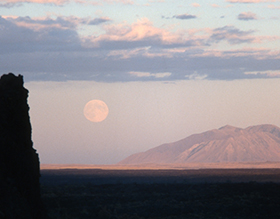Southern Idaho is home to four of the most interesting and diverse national monuments in the nation, all rich in history — both natural and human. Each one is packed with educational and recreational opportunities, from learning about ancient eras to exploring one of the darkest chapters of our recent past.
Craters of the Moon National Monument
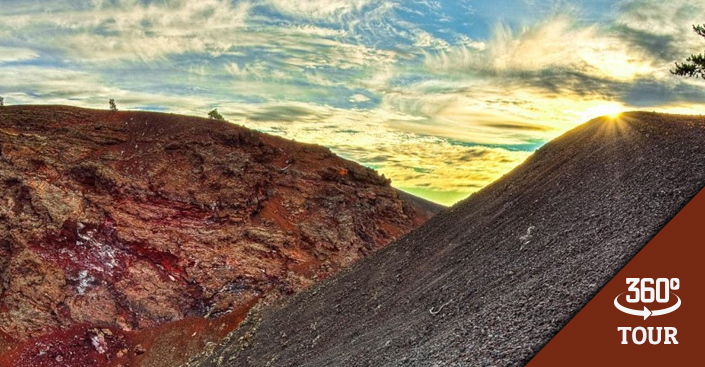
Stand in this vast ocean of lava flows and you really do as if you’re on the moon — in fact, astronauts Alan Shepherd, Edgar Mitchell, Eugene Cernan and Joe Engle came here as part of their training for the moon landing.
Craters of the Moon’s beautiful, alien terrain was created by eight major volcanic flows that occurred between 15,000 and 20,000 years ago. The resulting swathes of black rock are both mesmerizing and full of surprises: Come here in the spring and you’ll see hardy, colorful wildflowers that manage to thrive in this harsh landscape.
This area was championed by legendary Idaho explorer and author Robert “Two Gun Bob” Limbert, who published an article, “Among the Craters of the Moon,” in National Geographic Magazine in 1924. President Calvin Coolidge designated the area a national monument that same year. Craters of the Moon would make history again in 1970, when a portion of it was classified as wilderness — the first federally-designated wilderness within a national park system.
There are many great ways to explore Craters of the Moon: Drive the loop that winds through the monument, hike to caves and impressive craters, or ski and snowshoe in the winter.
Know Before You Go:
- Two of the trails are handicapped accessible.
- Check the website for events and guided nature hikes.
- Sunscreen and a brimmed hat are recommended.
- Wear closed-toe shoes.
- If planning to visit the caves, a flashlight is needed.
- A free Wilderness Permit is required to spend the night in the Craters of the Moon Wilderness area. They can be picked up at the Visitor Center during business hours.
- A permit is required for commercial filming or photography in the park. Contact the park for more information.
- Website: https://www.nps.gov/crmo/index.htm
Hagerman Fossil Beds National Monument
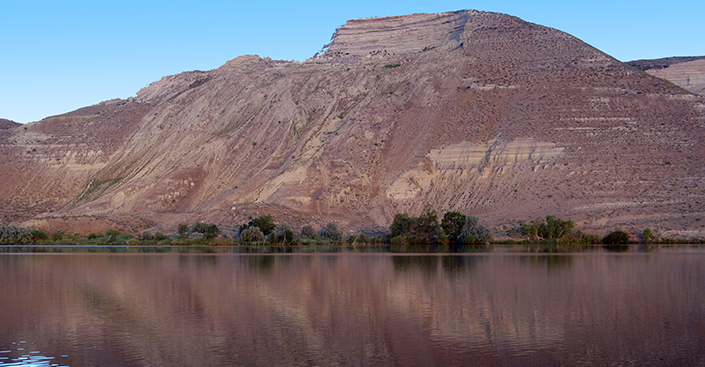
The Hagerman area is beautiful and tranquil now, with gorgeous waterfalls and bubbling, cool springs. But thousands of years ago, this idyllic spot was teeming with ferocious wildlife such as sabertooth cats, bears, and mastodons. You can find evidence of them (and less-terrifying species like camels and ground sloths) at the Hagerman Fossil Beds National Monument.
The fossil beds are still an active site: More than 3,000 new fossil fragments are found each year. The beds are most famous for their Hagerman Horse fossils. The Hagerman Horse, or Equus simplicidens, was the link between prehistoric equines and modern horses — it was about the size of an Arabian horse, but is thought to have had stripes similar to a zebra. Three million years ago, when Hagerman was a grassy floodplain, these ancient horses flocked to the area. In 1928, cattle rancher Elmer Cook discovered Hagerman Horse fossils, piquing the curiosity of the Smithsonian Institution. By the early 1930s, approximately three tons of fossils had made their way back east to Washington, D.C.
Of course, a lot has happened at this national monument since the Hagerman Horse roamed the area. The Hagerman Fossil Beds National Monument is one of only four units in the National Park system that contains part of the Oregon National Historic Trail. Check out the wagon ruts from the Oregon Trail Overlook parking lot.
Know Before You Go:
- When planning a trip, stop at the Visitor Center, located at 221 N State Street, to begin your visit.
- Please stay on designated trails. The ground is unstable in some areas and the plants and animals living in the area are fragile.
- Wear sturdy shoes; carry water and a flashlight.
- The National Park Service welcomes people with disabilities.
- Website: https://www.nps.gov/hafo/index.htm
Minidoka National Monument
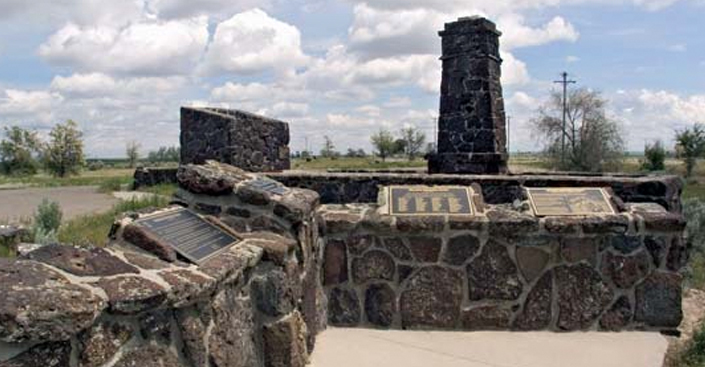
The Minidoka National Monument is one of Idaho’s newest parks and marks one of the most painful chapters in the nation’s history: The forced internment of thousands of Japanese and Japanese-Americans during World War II.
Between 1942 and 1945, this remote site served as a detention center during the relocation of 120,000 West Coast residents of Japanese ancestry. More than 10,000 internees were transferred to this spot in the high desert of Southern Idaho under orders from President Franklin Roosevelt. Internees included many ordinary families and notable people, including William K. Nakamura, a Medal of Honor recipient; Newton K. Wesley, who helped develop the contact lens; and composer Paul Chihara, among many others.
When the war against Japan ended in 1945, the internees were released; survivors and their descendants still farm in the area. The site became a national monument in 2001, and it’s still being developed.
Know Before You Go:
- The historic site is still being developed. Please be prepared. Wear sturdy footwear and bring water. There is little to no shade at the site. Portable toilet facilities are available.
- The site is located on a county road and may not be well maintained during winter weather. Please check road conditions before traveling.
- There is no fee to enter the Historic Site. There are no facilities or services at the site and the boundaries are not well marked.
- There is an exhibit and information about Minidoka National Historic Site at the Hagerman Fossil Beds National Monument Visitor Center located 40 miles away in Hagerman, ID.
- Website: https://www.nps.gov/miin/index.htm
City of Rocks National Reserve
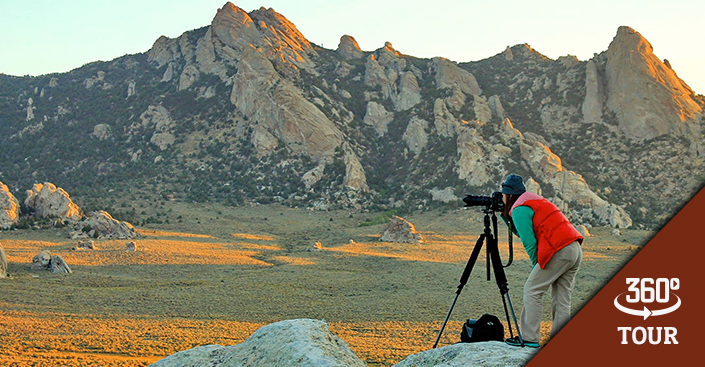
Pioneers traveling west in covered wagons were stunned by the amazing natural spires and rock formations in what is now known as the City of Rocks National Reserve — and this incredible landscape is just as intriguing to visitors today.
This 14,407-acre reserve is a haven for hikers, bikers, amateur geologists, and rock climbers from around the world. Towering pinnacles and domes lord over this area at the south end of the Albion Mountains, where climbers can find more than 600 routes ranging from 5.6 (relatively easy) to 5.14 (most difficult). Campers and hikers flock to the area from the spring through early winter, so be sure to snag a campsite reservation before going.
Birders will find hours of entertainment here, because the City of Rocks is home to the Greater Sage Grouse, Pinyon Jay, Virginia’s Warbler, Gray Flycatcher, Bushtit, Plumbeous Vireo, and Black-Throated Gray Warblers — among many, many others (163 species!). City of Rocks is also a perfect escape for horseback riders, hunters, and photographers. Feel like just sitting back and taking in the landscape? The City of Rocks Backcountry Byway starts in Albion and wends through the reserve for 49 miles.
Know Before You Go:
- Hiking during the winter and early spring may be difficult if trails are saturated with rain or snow.
- During the summer remember to take plenty of water to keep hydrated.
- All roads are gravel. Some roads may be impassable from November through April.
- There is no fee to enter the Reserve.
- For camping fees please see website.
- Website: https://www.nps.gov/ciro/index.htm

